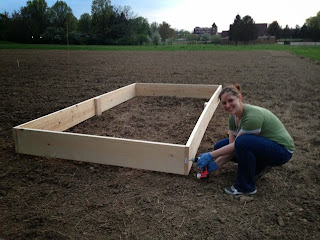Modified
3 sisters (Corn, Bush beans, Sunflower)
Middle (Circle) flower bed -- Aster
Traditional farmers call them weeds... we call them companions
Lima bean sprouts
Nasturtium sprouts or crimson clover or grass...?
Raised bed vegetable -- looking OK
Found some red wigglers, ants, spiders and other crawlies at the bottom of the damped plastic bag (bottom left). It seems like a haven for these creatures which helps to aerate the soil and degrade organic matter. Perhaps the reason for mulch being so essential is because of this? Haven for earthworms = haven for roots?
Placed 5 red wigglers onto our raised bed and they had a hard time penetrating through our soil... took them sometime to get comfortable. I have to start mulching my raised bed to provide a fluffier surface soil for a haven for earthworms. With what? Ideally cover crops... but they are still growing =.=" Maybe I should get some hay
Soon to be my mulch, hopefully
Tillage radish
For decompaction purposes
Viola sprouts
White onion
Note for the day:
Most gardeners are now working on their plots. Roto-tillers being used, traditional monoculture crops, using the word "production", "suppressing weeds". And here we are, planting "weeds" such as crimson clover, plants that attract pollinators such as sunflowers and buckwheat. To be honest, it feels weird to be non-traditional.
Let's see if our method actually works. Does this really help to nurture the soil? Does this really provide a sanctuary for pollinators, balancing pests and predators etc. Let's observe the science behind living soil and see if doing less work, mimicking nature, actually give us a better yield.
I really hope we don't get a warning for a messy/weedy garden :D



































